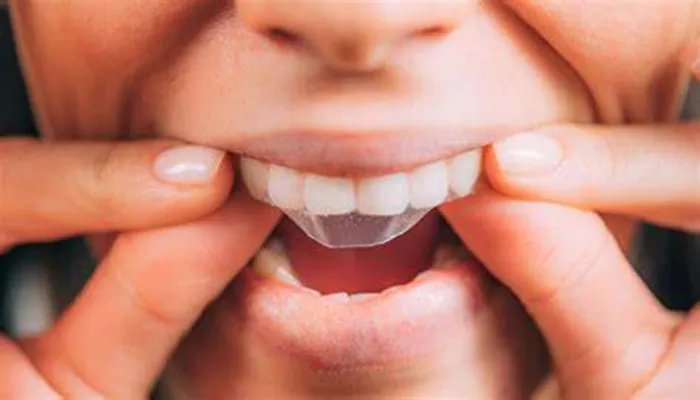Teeth whitening is a popular cosmetic procedure that many people choose to enhance their smiles. One common question that arises during this process is whether to brush teeth after using whitening trays. Understanding the best practices for maintaining oral hygiene during and after whitening treatments is crucial for achieving optimal results and ensuring dental health. This article will explore the relationship between teeth whitening and brushing, the recommended practices, and tips for maintaining a bright, healthy smile.
Understanding Teeth Whitening Trays
What Are Whitening Trays?
Whitening trays are custom or over-the-counter dental trays designed to hold a whitening gel against the teeth. The gel typically contains hydrogen peroxide or carbamide peroxide, which are effective bleaching agents. These trays are worn for a specified period, allowing the gel to penetrate the enamel and lighten the color of the teeth.
How Do Whitening Trays Work?
The whitening process involves the following steps:
Application of Gel: The whitening gel is applied to the inside of the tray.
Placement of Tray: The tray is then placed over the teeth, ensuring that the gel makes contact with the enamel.
Activation: The peroxide in the gel breaks down, releasing oxygen molecules that penetrate the enamel and dentin, breaking down stains and discoloration.
Duration: The trays are usually worn for a specified time, which can range from 30 minutes to several hours, depending on the product and the desired results.
The Importance of Oral Hygiene Before and After Whitening
Brushing Before Whitening
Before using whitening trays, it is essential to brush your teeth. Here’s why:
Removes Plaque and Debris: Brushing helps eliminate plaque, food particles, and surface stains, allowing the whitening gel to work more effectively.
Prepares the Enamel: A clean surface enhances the penetration of the whitening agents, leading to better results.
Reduces Bacteria: Brushing reduces the number of bacteria in the mouth, which can contribute to tooth decay and gum disease.
Brushing After Whitening
After using whitening trays, many people wonder whether they should brush their teeth. The answer depends on several factors, including the specific whitening product used and the timing of the brushing.
Should You Brush After Using Whitening Trays?
Immediate Brushing: Pros and Cons
Pros of Brushing After Whitening
Removes Residual Gel: Brushing can help remove any leftover whitening gel from the teeth, preventing potential irritation or sensitivity.
Maintains Oral Hygiene: Brushing after whitening can help maintain overall oral hygiene by removing any plaque or food particles.
Cons of Brushing Immediately
Sensitivity Concerns: After whitening, teeth may be more sensitive. Brushing immediately can exacerbate this sensitivity.
Enamel Considerations: The whitening gel may temporarily soften the enamel. Brushing right after whitening could potentially cause enamel wear if done too aggressively.
Recommended Practices for Brushing After Whitening
To achieve the best results and maintain oral health, consider the following recommendations:
Wait Before Brushing: It is generally advisable to wait at least 30 minutes after removing the whitening trays before brushing your teeth. This allows time for the enamel to re-harden and reduces the risk of sensitivity.
Use a Soft-Bristled Toothbrush: If you choose to brush after whitening, use a soft-bristled toothbrush to minimize any potential damage to the enamel and reduce discomfort.
Gentle Technique: Brush gently, focusing on all surfaces of the teeth without applying excessive pressure.
Fluoride Toothpaste: Consider using a fluoride toothpaste after whitening. Fluoride can help strengthen enamel and provide additional protection against sensitivity.
Rinse with Water: If you prefer not to brush immediately, rinsing your mouth with water can help remove residual gel and reduce potential irritation.
Managing Sensitivity After Whitening
Common Causes of Sensitivity
Teeth sensitivity is a common side effect of whitening treatments. Some reasons for increased sensitivity include:
Peroxide Concentration: Higher concentrations of peroxide can lead to greater sensitivity.
Duration of Treatment: Longer wear times can increase the likelihood of sensitivity.
Existing Dental Issues: Individuals with pre-existing tooth sensitivity or gum issues may experience more discomfort.
Tips for Reducing Sensitivity
Use Desensitizing Products: Consider using toothpaste designed for sensitive teeth. These products contain ingredients that can help reduce sensitivity.
Limit Whitening Frequency: If sensitivity persists, consider reducing the frequency of whitening treatments.
Consult Your Dentist: If sensitivity is severe or does not improve, consult your dentist for advice. They can recommend alternative whitening options or treatments to alleviate discomfort.
Maintaining Your Results After Whitening
Good Oral Hygiene Practices
To maintain the results of your whitening treatment, it is essential to practice good oral hygiene:
Brush Twice Daily: Continue to brush your teeth at least twice a day to remove plaque and prevent staining.
Floss Daily: Flossing helps remove food particles and plaque from between teeth, reducing the risk of stains.
Use Mouthwash: Consider using an antibacterial mouthwash to help keep your mouth clean and reduce bacteria.
Avoid Staining Foods and Drinks
After whitening, it is wise to avoid foods and drinks that can stain your teeth. This includes:
Coffee and Tea: Both can lead to discoloration.
Red Wine: Known for its deep color, red wine can stain teeth.
Berries: While healthy, berries can leave pigments on your teeth.
Dark Sauces: Soy sauce and tomato sauce can also contribute to staining.
Regular Dental Check-ups
Regular visits to the dentist are essential for maintaining oral health and the results of your whitening treatment. Your dentist can provide professional cleanings, check for any dental issues, and offer personalized advice on maintaining your smile.
Conclusion
Brushing your teeth after using whitening trays is a common concern for many individuals undergoing teeth whitening treatments. While it is important to maintain good oral hygiene, timing and technique are critical to avoid exacerbating sensitivity and protecting enamel.
To achieve the best results, wait at least 30 minutes after removing the whitening trays before brushing. Use a soft-bristled toothbrush and fluoride toothpaste to gently clean your teeth. Additionally, monitor your sensitivity levels and consult your dentist if you have any concerns.
Related topics:

